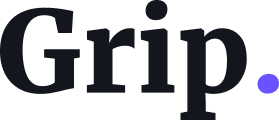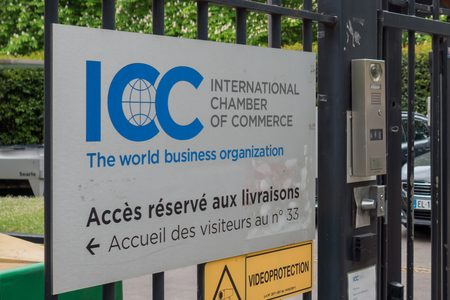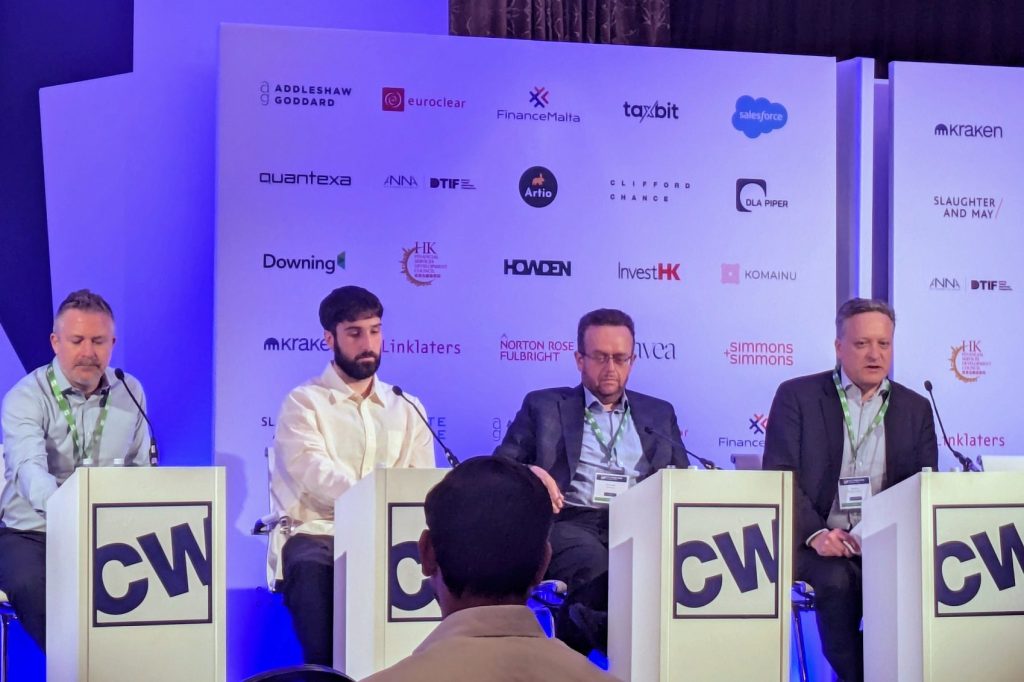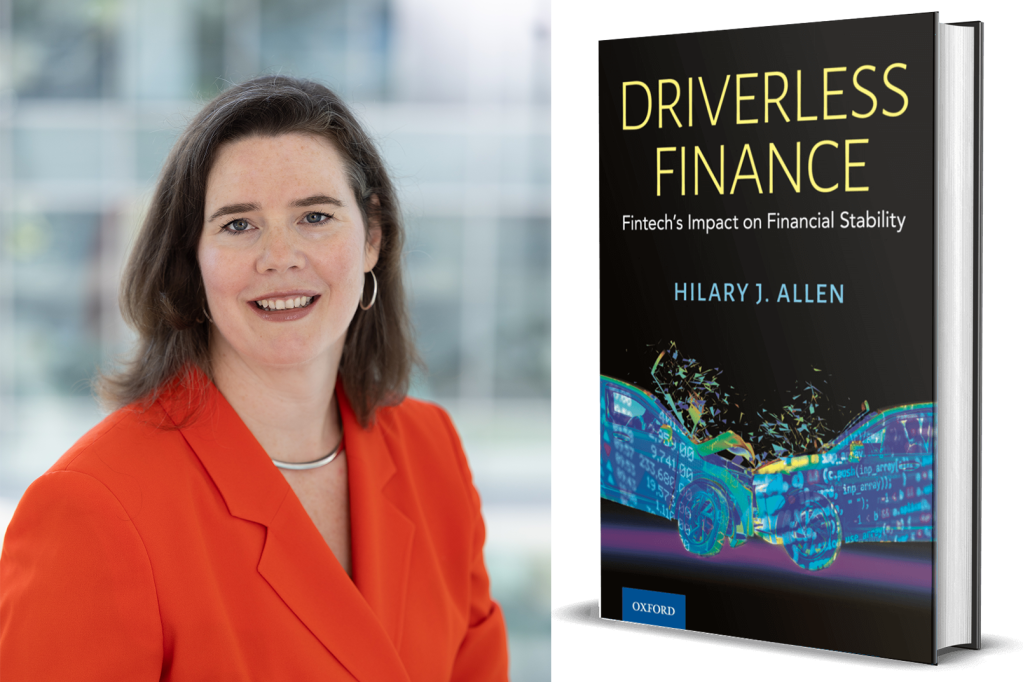This is a transcript of the podcast episode Scott Simpson at DHS talks managing tech supply chain challenges with relationships between Scott Simpson, Digital Transformation Lead at the US Department of Homeland Security’s Procurement Innovation Lab, and GRIP’s US Content Manager, Julie DiMauro.
[INTRO]
Julie DiMauro: Greetings, and welcome everyone to a Global Relay Intelligence and Practice podcast. Our thought leadership portal is called GRIP, and it is full of articles, regulatory updates and discussions with industry and regulatory agency leaders, where we discuss new compliance obligations, trends and technology. You can find us at grip.globalrelay.com and follow GRIP on LinkedIn, and I hope you will.
Please allow me to introduce my guest on today’s program, Scott Simpson, Digital Transformation Lead, Department of Homeland Security, Office of the Chief Procurement Officer in the DHS Procurement Lab.
Scott, can you please tell us a little bit about your background and what your current role entails?
Scott Simpson: Hey Julie, thanks very much for having me. So yeah, my name is Scott Simpson.
My background is varied. I’d say I’m a bit of a Renaissance man. And so I went to school in Florida, and then I got a law degree from American University’s Washington College of Law.
In 2009, I started working with the Department of Homeland Security as a contract specialist. I’ve got a bit over 10 years experience as an operational contracting officer.
I supported a cybersecurity and infrastructure security agency, CISA, way back before it was called CISA even. I supported the US Coast Guard with one of their large IDIQs. I support, or used to support the Office of the Chief Information Officer and the Office of the Chief Information Security Officer doing their cyber and data work. And then in 2019, I came over and joined the Procurement Innovation Lab.
And with the Procurement Innovation Lab, I’m an innovation coach. And so what that entails is coaching procurement teams in how to do things better, faster, smarter, as well as serving as the digital transformation lead for the Procurement Innovation Lab, where I am the product owner for a couple of AI tools.
And that’s me in a nutshell.
Julie DiMauro: Terrific. Thanks so much, Scott.
Now I want to start out just by asking you about today’s procurement landscape. I’m wondering what you would say are some of the most pressing challenges. Which ones are new and require new adaptations to the procurement playbook?
Scott Simpson: Yeah. And so I gave this a lot of thought. And it’s kind of funny that this is a bit of a technology podcast, I think. But I don’t think technology is one of the biggest things that’s challenging us today. I think it’s actually culture, fear, and building relationships. And so the procurement culture goes back centuries.
We’ve been buying things for the federal government. The federal acquisition regulations just turned 40. And before that, we were buying things, how we always buy things.
And so our cultural baggage goes back a long time. And so when we ask, well, why are you doing this long, lengthy process, a lot of times the answer we get back is, well, that’s just how I’ve always done it. And one of the things we’re trying to do at the Procurement Innovation Lab is break that down and get to the heart of, well, let’s do the things that we need to do.
And let’s only do the other things if it’s a benefit to us. Is it going to reduce our risk? Is it going to get us a better mission? Is it going to increase collaboration or competition? If it’s got a benefit, let’s go for it. But if it’s just a paper chase, or if it’s not reducing my risk, let’s get it out of here.
And so changing that culture is really important to us. And it all starts at the very beginning of the federal acquisition regulations. FAR 1.102, maybe this is too deep for your audience. I don’t know if there’s more attorneys or not. I always like quoting a regulation for attorneys.
But FAR 1.102 says that if it’s not prohibited, then it’s allowable. And that’s a whole culture change for any kind of procurement professional, whether you’re talking about a contracting officer in the field, a policy, or a legal advisor.
That’s a cultural change because there’s a lot of gaps in the FAR where it just doesn’t say anything. You look at like a FAR 13 simplified acquisition, it’s super thin. So we’re trying to change that culture. And that goes right into the fear part, is that there’s a lot of fear out there, both around that culture change and around other knowns and unknowns.
For so long, people have done it this way. They know that if I do it this way, it might take a long time. There’s a lot of steps to document, but I’m going to get to the end and this is going to be my result. And that’s the process that they know. And when we’re talking, coming in about using innovations, speeding things up, taking things out, that leads to unknown and fear. And so we’ve got to manage that.
And one of the ways that we do that is through stories. We tell stories of other procurement teams that had success, what that looked like for that team. And that shows the new team that wants to try something. OK, I’m not the first person putting my foot into this rabbit hole. I can give this a go. And that fear and that culture obviously lead right into relationships. And it’s relationships among the team.
You’ve got your program office staff, you’ve got your contracting staff, your legal staff, your policy staff. They’ve all got to work together. The first time they’re talking cannot be when they’re making an award or when they got a protest. They need to be talking way before that to understand what they’re buying, but also to build that relationship.
Because, you know, Julie, if you and I had never talked before, I’m going to be nervous coming on here, right? I’m not going to be as open. I’m going to be a little closed off. We’ve had lots of conversations now. And so, you know, we know each other a little bit. And so we can be open and honest with each other. And so if you build those relationships, they pay off. And especially this is where we get back to technology.
Technology is not really helping us to build relationships all the time. I love being on camera. I love talking to people that way. But a lot of people are relying on LinkedIn messages and emails. And those aren’t really building relationships. It’s just another paper chase.
So a lot of these collaboration tools don’t really help us collaborate in the way that we need to be. And then that goes off to, you know, now we’ve got this relationship amongst the government. We need to build the relationship externally, too, with partners like Global Relay and with partners like vendors and with partners like academia, because they’ve all got a part to play in this procurement process.
Because at the end of the day, we are procuring something either for the citizen that they’re going to use or for the benefit of the system that’s going to protect them from something. And we’re all citizens. We’re all part of that process. And so we need to make sure that we have those relationships built in so we, you know, get the whole process right.
Julie DiMauro: I love that emphasis on the relationships and the trust building that goes along with it. Now, in thinking about maybe any resistance that you encountered, how did you build the buy-in? You kind of hinted at it already. And who did you have to collaborate with to make this happen? Move this forward.
Scott Simpson: Yeah. So the Procurement Innovation Lab started, I think, in 2016, I think, so like six or seven years ago now. And we’ve built a lot of roads over the years with a lot of different folks, because like you mentioned, there were a lot of resistors. There were a lot of challengers.
And so actually, you know, the first people that we had to build roads with were the contract specialists and contracting officers that were doing the work, because we were coming in and giving them new ways to do things.
And you know, they didn’t, a lot of times they didn’t know us. And so we had a lot of early successes with teams we had worked with before. So I did a lot of coaching with the headquarters teams that I had worked with because they knew me. I was a known quantity. And I had that relationship. They had some trust with me.
And I might have been coming in with some like zany idea that someone else, if it pitched to them, they would have been like, no, no way. Right. But because it was Scott, and they knew Scott, you know, they at least listened. And then we tailored it to what they were comfortable with, and to get that good result still.
So we started with them. And then we just worked our way up, up and down the chain, we just keep going. And so you really you can’t do any of this, if the top of the chain, the leadership doesn’t support it. And so we whenever we have a training event, there’s always a senior leader who kicks it off. And that is super important for that team who’s taking the training to see, oh, this isn’t just a training I’m taking my leadership wants me to take this training and actually use the things I’m learning. Oh, all right. Well, now I’ve got some top cover, I can actually apply these things. And just everyone in between.
We’ve got a really great partnership with industry. And some of the some of our innovative procurement techniques were actually suggested by industry. Like hey, you know, have you thought about doing this? This is something that we do in industry to buy things. And we think that it would be applicable to the procurement process.
But it’s also building that relationship with them so that they can come back to us when something’s not working. So I don’t know, maybe five years ago, we tried something called video proposals. And that’s where like, just like you and I are doing, we record ourselves talking, and then we submit that as a video.
And we thought, hey, this is a great thing people can like, use just like we’re doing now with like a zoom, they can record a little oral presentation, and then they could submit it. The government has that record, they can watch it again and again, whenever they want. Okay, well, it turned out it was actually really expensive for industry.
Because not only were they hiring coaches to like help with their body language and their delivery, but they were also hiring video editing companies to give it that little twist.
And we said, well, that’s not what we’re looking for. We just really want the down and dirty. And they said, yeah, but when we’re representing our company, we can’t do that. Just like when you’re representing your agency, you wouldn’t do just do the down and dirty, right? We can’t do that and make our company look bad.
And so we’ve kind of walked that back a little bit and shifted to, you know, instead of a pre submitted or a pre recorded video, why not just have like an oral presentation? And if it’s 15 minutes, it’s 15 minutes, like we all have these calls now where it’s like, hey, we’re just gonna have coffee for 20 minutes.
Let’s do that with industry and make it like a coffee date for a short phase one proposal to see if we click or not before we go on to the big long oral presentation at a fancy restaurant.
Julie DiMauro: Thank you very much. I know that really clarifies it and explains how you’ve developed some of those relationships over time. I love it. And because these programs, you think about them on paper, right? You think of them in an academic sense, but they have to actually run in reality. And this is people and departments and, you know, different companies and third parties talking to each other, right? And developing relationships over time.
Scott Simpson: And it’s so important to think about the people behind that. Because you know, behind every federal position, there’s a person. And behind every labor category, there’s a person. And so I was just talking to a team yesterday and they were talking about releasing their solicitation on July 2.
And I thought, whoa, hold on, guys. The fourth is on a Thursday. The fifth is on a Friday. And then there’s the Saturday, Sunday. It’s like, that’s a four day weekend. No one’s working that. How long do you even give them to respond? And you know, like, it’s that kind of thing that, well, it drives industry crazy. I know because they’ve told me about it.
And I don’t want teams doing that. Like, we want people to have family time, right? And they are not going to do their best proposals for us when they are thinking about their family at the beach, right? So I want to give them the space to like, just forget about it and give me a good product come that Monday. That’s the kind of relationship that I like to have.
Julie DiMauro: Absolutely. No, that’s a great point. Now, Scott, I want to ask you about some classic TPRM matters. So third party risk management. There’s always risk in working with third party vendors and other business partners, right? So from managing relationships to fulfilling contract terms, what are some of the other tricky aspects we might not be thinking about? And I was thinking about post pandemic issues, geopolitical concerns, maybe some human rights. What are some of the other ones that we should be mindful of?
Scott Simpson: Yeah. And, you know, I think I’m going to sound like a broken record, but the first step, I think, really does go back to managing that relationship. We can have conversations with the third party vendors to find out with them, hey, where are you seeing risks? Where are the gaps that we’re having? We think we have this requirement that you all can do. Is this something that you can do?
And so having that early engagement with them during market research, really powerful. You think like, oh, this is novel. Like, no, this is something we could have been doing the whole time. But under the guise of market research, what I suggest to all my teams is go out and talk to folks. And so if you think there’s a risk with third party vendors, go out and talk to them and ask them, hey, here’s what we think we’re going to do. What do you all need to support that?
And maybe they’re going to say, hey, we need extra time to get the OEM on board. Maybe we need extra time to get another vendor on board because we can’t do all the work. Maybe we need extra time for partnering with a HUBZone or an 8a or whatever that is. But it starts to build that relationship so that when you drop the solicitation, that’s not the first time they’re seeing it. Because if that is the first time a company is seeing the solicitation, we’ve done a bad job.
We need to be starting with market research. We need to be doing a draft. We need to be doing all those things. And as we go through those, that’s when the risks will start to percolate to the top. And that’s when we’ll really start to be able to address them and not address them in a vacuum, but address them with our industry partners and with our other government partners.
Like, I’m not buying anything unique for Homeland Security. Maybe there’s a few unique things, a very few unique things. I heard yesterday about one where they were using a hot air balloon up over the southwest border to provide wi-fi to the border agents down there. That’s pretty cool. But I think they’re doing something similar in like Ukraine with the Department of Defense.
So even there, we don’t have a unique, unique requirement. So why aren’t we talking to those other folks about what they did? Reaching out, making time to call them, learn their lessons learned so we can fail fast, fail forward, and get a better mission out there. So all of these things are things that I think help to identify those risks and then address them as they come down in a group. And there are things that we’re not going to be able to share. That’s OK, but we can share as much as we can to meet the mission best, because that’s what I’m here for. Because I just don’t want to meet things as fast as I can or as cheap as I can. We need to make sure that all of this is taken into account to meet the mission.
Julie DiMauro: That makes a lot of sense. Terrific. And I’m just following up on relationships and developing relationships with vendors in particular. When you’re relying on them, on vendors, maybe even to get around a bottleneck, a supply chain bottleneck, I’m thinking about backup vendors and what your strategy is in not over-relying, but yet having obviously a very solid relationship with trusted vendors. What does that balance look like?
Scott Simpson: Yeah. So when I was an operational contracting officer, one of the best things that I did was we had a vehicle called FirstSource II. And it was a multiple-award IDIQ for hardware software. And each of the tracks under there, so we had a track for HubZone, we had a track for Small, we had a track for 8A, they could all provide the same thing. And so it was really about, well, where do I need to meet my small business goals?
But it became more than that as well. Because it was a multiple-award, we had a lot of redundancies in there that if the company I did a lot of business with wasn’t able to get something, there was someone else able to get that on there. And I learned that over time as I built those relationships with people.
And so I get a new requirement in for X, Y, and Z software or hardware, and I pick up the phone and I call a couple of them to say, “Hey, this is the requirement. Is this something that y’all can do?” And then I find out, Okay, well, these ones aren’t really in that space. This one is more in that space. And I knew that someone could do that.
But it was like you said, like building that relationship, calling people, talking to them, and not just sending them a solicitation and telling them, “Hey, you got five days to get this quote back to me.” I mean that’s not a relationship, right? You got to talk to them beforehand.
In fact, we built such good relationships that there was a vendor that came to me one time and I had made this award and I’d sent out the notification award. And normally in this situation, someone would drop a protest, but instead he emailed me and he said, “Hey, Scott, I had the lowest bid. Why didn’t I get the award?” And it’s because I had missed his bid. And so I was able to do a quick termination for convenience.
The other vendor totally understood because I’d built that relationship with them. Like this had never happened before. But again, one vendor could have been like, “Oh, well, I need money for this and everything else.” They’re like, “Hey, no problem, Scott. We know it happens. You’re a good guy to work with.” So if both vendors were happy, I didn’t have to deal with a protest. I didn’t have to deal with anything else because I built that relationship with them of trust and transparency and everything else. And so when we do this, that’s when we start to learn more about ways to get around the supply chain bottlenecks.
Maybe it’s ordering earlier. Maybe it’s talking with vendors to see if we can do a rated order. You know, like there’s a couple of agencies out there, DOD and DHS, both have the ability to do a rated order to say, “Hey, this is important for national security and I need this moved to the top of the supply chain so that you’re manufacturing mine first.” And so we looked at that and looked to see if it was possible for some of our requirements. But without talking to people, I would have never known that was a possibility like doing a rated order.
So really, just going back to the whole talking to people thing about, “Hey, we’re having issues here. What can we do?” The other thing that I really like, and I think this goes to the supply chain issue, is when we’re ordering something, we can’t just place the order and forget about it. With Amazon, I place the order and I forget about it. And then a box comes, I’m like, “What did I order again?” But with ordering hardware, software, whatever else, we need to set up those check-ins because these are supposed to be value-added resellers. And the value add there is they’re going to help us make sure it gets to our door. And so with some of these, especially when we were having big bottlenecks with chips a couple of years ago, or I don’t know if you remember, but there was a part shortage for laptops coming out of Korea for like five years.
And so once we put the order in, we’d have weekly calls with the vendor to find out, “Okay, what’s going on?” And they say, “All right, well, you ordered 1,000 laptops. We can’t get you 1,000, but the first 100 are ready, do you want me to ship them?” “Yes, please, send us 100.” And then you keep going and say, “All right, we’ve got another 50 ready. Send them in.” And then someone would say, “All right, we’ve got another 50.” And say, “Well, we’ve already got 150. We’re good for now. Wait until you get a batch of like a few hundred, then send us that back.”
So that communication allowed so much flexibility with the supply chain issues. And you get the same thing with software too, where, “Hey, I’m going to order this software, but I’m ordering 100 licenses. I’ve only got 90 people who need it right now. Can we hold off on turning those other 10 on?” You start talking with people and you realize the art of the possible. I mean, it’s not like a magic bullet to get around supply chain bottlenecks, but it helps.
Julie DiMauro: Absolutely. Now, what I really like about this discussion too is that instead of just talking about contract terms and technology that can help you, you’re saying, “Those things are important, but at the end of the day, a lot of these things can break down or be saved because of relationships that you’ve built over time.”
Scott Simpson: Yeah. We’ve got a couple of new contract terms coming out from Sysa about software. We’ve got new cyber terms coming out. And so these terms are really going to be important to industry, especially as they’re delivering the software hardware of the future. So having the conversations with them early about, “Hey, how is this term going to… I know that I’m putting an order in this year for laptops from Korea. How is this clause going to affect those future orders?”
We can do that as an ongoing market research and have a couple of conversations with a few different vendors and get that information because chances are they haven’t even thought about it yet. And again, I don’t want them to think about it the first time when I’m putting that solicitation out in the street.
I want to know beforehand, this is going to be a problem. We’re going to need extra lead time to make sure that the whatever, the laptops or the servers are compliant with this term or that the software that you’re buying is compliant with this new clause. We need to start having those conversations to get them prepped for that and communicate and be transparent. It’s all just part of building those relationships.
And it’s going to happen, I think, more and more. I just saw this morning, I think, that there’s a bipartisan Senate bill about more about AI responsibility and those kind of things as AI is integrated into more and more software and hardware. Those are things we’ve got to be sharing with. And I know that it’s out there, so everyone can read it, right? But our industries are not mind readers. So we need to start having those conversations with them directly about, “Hey, you’re in my supply chain. I’m going to have that conversation with you directly to find out what’s the impact here.”
Julie DiMauro: Absolutely. Well, I was going to ask you about AI and data analytics. What are you foreseeing in terms of their use? What are some of the concerns that you have in the rollout of these technology tools? Maybe how you’re using them already?
Scott Simpson: Yeah. Let me start with the really exciting, I think. The large language models and the generative AI, I am just so excited about what those can do for our workforce. Because as we talked about in the first little bit, there’s a lot of paperwork that we do. And a lot of it is kind of redundant. I’m not talking about the best value tradeoffs. I’m talking about, “Hey, I need to write up a justification to use time and materials,” or “I need to do some other kind of documentation like that. I need to take all of this market research and summarize it into one page.” And I think generative AI and LLMs, large language models, are just going to help so much with those documents. Now, again, they’re not a silver bullet. They’re going to help us get to 70%. But hey, I’ll take 70%.
We’re coming up on fourth quarter. I know that the operational workforce out there just has a ton of work to do to get everything awarded by the end of the year. Any tool they can take advantage of to help get them to that 70% is just fantastic. Now, there’s a couple of hurdles that we’ve got to get over. The first one is that right now, currently, a lot of the large language models are sitting out there on the open internet. It’s like an open cloud instead of a private cloud. And I can’t put source selection information into them. I can’t put non-public data into them. And so the first thing we need to do is get those things inside of our FISMA boundaries or disconnected from the internet so that I can start taking advantage of them with government data that isn’t shared back to the large language model. And I’ve talked with a few vendors just this week, and it’s coming.
There’s a couple that are getting into FedRAMP IL3. There’s a couple that are looking at how I can do this within a data center or a cloud environment. So that’s coming, and that’s fantastic because once it’s on board, then I can take the power of LLMs and generative AI and just scale it.
What we’ve done so far using just kind of your regular artificial intelligence is use it for some data management, I would think you’d call it. And so we’ve got two things that we’ve done so far. The first was a pilot, and the second was a production type environment. So in our first one, we looked at can artificial intelligence help us to sort the most relevant CPARS evaluations from the least relevant.
So in this kind of scenario, Julie, you’ve submitted a quote to me. Thanks very much. I’m going to go out and review your CPARS just to see what your past performance is like. But you’ve been doing work for a long time. You’ve been doing a lot of contracts, and there’s hundreds of records in there. I don’t know which ones to look at. So instead of looking through all of them because that’s not possible, what I would normally do is ask you, “Hey, Julie, which three or four should I look at?”And then you tell me the best ones, right?
Well, instead of doing that, I can use artificial intelligence to look at, “Hey, which one of these is most similar to what I’m buying?” And it sorts them. It doesn’t take anything out. It sorts them from most relevant to least relevant. And then I can go through, and I can stop at some point when I say, “No, these ones are no longer relevant.” So it gives us a lot of possibility there. So we started there with a pilot. And as we were going through that, our acquisition workforce told us, “This would be really useful for market research, too.”
A lot of times when we’re starting market research on a new kind of thing, we don’t know where to start. And so if I’m doing a new product buy or a new service buy, I’d love to have just something to help me fill up that page. And so we took all of the data that’s out there from FPDS, from SAM, from USA Spending, from the Small Business Administration. We sucked it all up, and then we’re able to put in a few search terms. And again, the AI is using natural language processing, which is a type of artificial intelligence, to look at what awards have been made in the last two, three, four years for similar services.
And these are actually… This is live now. This is in production. We awarded government-wide contracts for this back in 2022, I think. And people have been using it since then. And it’s really helpful because you get this list back of, “OK, here’s the vendors that have done this before.” You can start with them. You can see a trend of, “There’s more of these on NASA soup than there are on Alliant. I’m not going to do an RFI or request for information to the whole world. I’m just going to go to Alliant, or I’m just going to go to Oasis, whatever else.”
It gives you that playing field so that you’re no longer starting from that blank page. Because that blank page, that’s scary stuff. Like I’ve got no idea where to start. Well, I don’t think it’s scary stuff because I know that I just pick up the phone and call somebody and I say, I’m a talker, right? “Hey, I’m Scott Simpson. I’m doing some market research. Do you have some time to talk about this new service I’m buying?”
But there’s a lot of people out there who want somewhere to start, and this will help you surface it to say, “Hey, Julie, I got your name out of this market research for AI tool. I’m buying this. The tool thinks you can do it. Can you talk?” So we’ve got these two tools out there, however the CPARS one is still in a pilot phase. I don’t know where it’s going to go because it’s got some sensitivity in there. But I’m just super excited about the tools that are coming out that government’s going to be able to take advantage of in the next five years.
Julie DiMauro: And I like how you reminded us too that the AI tools give us a great amount of added efficiency, but at the end of the day, you still need human beings to verify, right?
Scott Simpson: Yes. It’s not really … I mean, we sort of think of it as an artificial intelligence. That’s what the moniker is. But it’s really more like augmented or assistance instead of intelligence. We always need the human in the loop, not just for hallucinations, but to confirm that this is actually the truth, like what I’m writing down and that it makes sense. So yeah, like I said, it’s a 70% solution, and then we as people need to bring it to that 100%.
We need to be putting eyes on it. That’s like our responsibility to the public, just to continue to do that because we are good stewards of the taxpayers’ dollars and the taxpayers’ time and resources and everything else.
Julie DiMauro: You always provide me the best segues, Scott. My next question is about costs and managing resources. How do you make those judgment calls when you only have a certain amount of money and time to spend on acquiring certain technology tools? What would you say to maybe smaller or mid-sized businesses that have these cost constraints?
Scott Simpson: Yeah, I mean, it’s really tough. I think I’m a little jealous of industry in this respect because industry can show the return on investment to say, “Hey, if I invest $1, I’m going to get $2 back,” or “I’m going to save $2,” and that’s actually $2 saved. But those two things for government are hard because, for instance, I might invest $1 million in a closeout tool, and the closeout tool is going to deobligate money in real time so that I can spend it. But at the end of the day, I don’t get to spend it. All of my mission or program teams get to spend it.
So even though there’s a cost savings there, it’s not coming back to me. It’s almost like a shared service. And so it’s tough in the government. I look at things like time saved as a big one because if we go back to a large-like-which model, if I’m taking an hour and a half to write a document that doesn’t use a lot of brain power, and a large-language model can write that document for me, again, 70% in five or 10 minutes, and then I can take 10 minutes to get it to 100, that’s value add.
I’m going from an hour and a half to 20 or 30 minutes. That’s a great return on investment for me because then I’ve got more time, and not me, but the operational contracting officers out there have more time to spend on calling people, doing that market research, talking to the program office.
There’s so many times that the acquisition workforce has just swamped. We’ve got an aging workforce. We’ve got a workforce that it’s hard to staff in. I just heard, I think, Joni Newhart say that only 7% of the workforce is under 30. When you think about if there’s generations of 20, 30, 40, 50, 60, that should be like 20%, and we’re only at 7%.
Our workforce is… it’s tough out there. If I can get time, the time where people are cutting, and I can say this because I was an operational CO, is building those relationships because I don’t have to build a relationship, but my acquisition plan has to get approved before I’m allowed to make an award, before I’m allowed to release that solicitation.
That’s what I focus on is what are those things that I have to do? If a large-language model or an AI can get me back to talking to my program, talking to my customer, talking to my vendors, that’s fantastic. The cost is always tough, and so for vendors out there who are building something, you’ve really got to think about what is going to be the return on investment for government. Is it going to give me a better product, or is it going to save time? Then from there, is it reasonably priced? I don’t mean is it fair and reasonable, like we’re all procurement attorneys or whatever else. We know it’s got to be fair and reasonable, but is it something that government can actually afford? That’s what I’m talking about.
There’s so many agencies out there where our budgets are tight. We do not all have cash just flowing around, and there’s a lot of offices in the support groups and in the mission groups too, frankly, but where we just don’t have that kind of cash to spend on technology. It either needs to integrate with what we have or be really reasonably priced. I think that’s where it’s going to get a lot easier soon, is as more and more of these tools become integrated with what we already have, that’s where we’re going to be able to take advantage of them.
You look at Microsoft just launched, I think, Copilot, and that’s something that we can use. Now, it’s not to the full degree, because I still can’t put source selection information or non-public information in there, but I can take advantage of that. There was another one too. I think Office now has a … within Outlook, you can generate an email, or it can do a shortened email for you. Again, that’s a tool I can take advantage of. The hardest part for me goes to how do I educate the workforce on that to know that these tools are out there, because some of them, they just kind of pop up for me, and I’m like, “Whoa, that’s cool.” We do a lot of sharing within the Procurement Innovation Lab.
We just met yesterday with the Procurement Innovation Neighborhood. This is just kind of an informal monthly meeting of innovation enthusiasts, where we talk and share what’s been going on in the last month or so. That might be a place where I share, “Oh, hey, did you know that if you’re in an Outlook now, you can type out an email and then hit the Go button, and it’s going to do this and that and the other thing for you?” Great place to share that, and then also share how to use AI responsibly.
We got to make sure that we’re doing that. It can’t be 100% solution. It’s what we were going back to talk about. It’s not artificial intelligence. It’s either augmented intelligence or artificial assistance. We need to make sure that we’re using it responsibly. We need to have people asking the questions about bias and what is it doing. I just heard this week about someone where they were using artificial intelligence to read resumes beforehand and suggest the resumes that were a best fit for the company.
The way that they did the training model was they fed it all of the resumes for the people who were already on board. So when the model was giving it resumes to look at, it was a feedback loop of, “Hey, this is what you look like now. This is what you should look like in the future.” It was people who had a law degree and played sports and went to the Ivy Leagues or whatever else. It wasn’t looking at where can we get a good fit for diversity, where can we grow and have a well-rounded look.
We need to be educating our workforce about those kind of things, not so that they can fix it, so they can fix it eventually, but just so that they’re aware of it. Because there’s so many people that just don’t even think about it right now. And so once they’re aware of those things, then they’re starting to use AI responsibly for looking at, “Hey, when I’m using the market research tool, is it showing me new entrants?”
That’s a new thing that the Biden administration is putting a big focus on. How do we capture those new entrants, those non-traditionals? That is something that it’s going to start to do soon because it’s looking at if you’ve registered in the system for award management, it can crawl your website that you listed, and it can pull the about down. When I’m looking for firefighting suppression support, it can show me, “Hey, there’s this new vendor out there. They just registered in SAM, and they are an exact match for what you’re looking at.” You might want to give them a call because those new entrants, they’re bringing new ideas, and that’s what we need too.
Having all of this out there gets our workforce educated about AI, large language models. It gets them working better and using the tools responsibly that they have.
Julie DiMauro: I wanted to ask you about employee training and digital skills that you need within your department to perform your job. What are some of those skills and training components? What do they look like?
Scott Simpson: I’ll speak for the Procurement Innovation Lab and how we’re training the acquisition workforce. The first thing that we all have to understand is that we’re training adult learners, and adults learn differently. Adults really like to learn by doing, and they want to know the why. When you’re building your trainings, you can’t just tell them, “Hey, you’ve got to put this new clause in all your contracts.” That’s not going to be effective. You have to tell them why.
If you just tell them, “Because the law says so,” that doesn’t help either. You’ve got to go back and say, “We’re having a problem with cybersecurity issues within our software, and we need to put this clause in so that we’re understanding the impacts of X, Y, and Z on the software.” Once they know that, then they say, “OK, I’m on board. We need to do this to protect the mission and to protect the department. I’m good with that. How do I do it?” OK. Well, let’s have some hands-on training now. We’re sharing screen here, but we want you on this next one. Follow along with us. We all want you to type this in, and we’re going to do fingers on keys to do this practice now.
This is what we’re getting to, so that we’re teaching adults effectively. We do this in the Procurement Innovation Lab, not just with clauses, because we don’t actually do a whole lot of work with clauses. I’m just thinking about clauses, because we talked about it yesterday in our Procurement Innovation neighborhood, but through these innovative tools we talked about at the start of the podcast. If we have a tool like oral presentations, we will actually sit down with them, with the acquisition workforce, as we’re teaching them about oral presentations.
We’ll have them come up with a couple of scenarios where they might use oral presentations. We’ll have them come up with a couple of elements under that oral presentation to teach them that we’re not asking them for the whole technical and management approach. We just want a couple of questions that touch on different aspects of the technical and management approach.
Instead of having them describe their whole management approach in an oral presentation, maybe we just want to ask them, “Hey, how are you going to hire and retain people?” That’s what we need to ask them. I don’t need you to tell me about your staffing planning in oral. We’re having them try that in a safe space, like a learning environment, and then they can take it back to their office and try it with their programs and with their customers and everyone else.
We’re also doing simulations of oral presentations. A lot of times when I’m coaching a team, when they’re getting ready for the oral presentation, instead of just throwing them into the deep end to do an oral presentation, about two weeks beforehand, we go through a mock oral presentation. Sometimes it’s tailored to them. Sometimes it’s just off the shelf kind of thing. We have them watch a video of two of our coaches role-playing a vendor oral presentation. It’s about 10 minutes.
Then afterwards, we pause the video and we go into that consensus. They start calling things out and we can give them real-time feedback on, “OK, this is a good one. Here’s how we’re going to massage that. This one may be not appropriate and this is why. Here’s how you manage people.” I noticed that John was talking a lot and Janiqua wasn’t. How do we get both people talking? We can do that in a real setting. That way when they’re going into the first one, they’re not scared because we’re talking about reducing fear again. They’re not using that as a practice session. I want to really speed up that learning curve so that they’re not starting the learning curve flat at that first oral presentation that they’re already on the learning curve and they’re going to just fly.
We’re using a lot of things like that with our teams. I think it’s been really successful. There’s a lot of teams that have said, “Hey, this is great. I’m doing another oral presentation for a different team. Can you do something similar for them even though they’re not getting coaching?” Sure, I’d love to. We’ve also actually put it out onto our YouTube website so that contracting officers who have been through our training, if they want to use it, they can use it on their teams too and say, “Hey, we’re all going to watch this YouTube video and then we’re going to pause it and go into consensus and practice.” The contracting officers love it because they’ve got a tool. Now we’ve got to get them as time to implement that tool because when we give them time, that’s when they can do their jobs the best.
Julie DiMauro: Absolutely. Thank you so much. One more question for you. It wouldn’t be a complete discussion about supply chain in 2024 if we didn’t make some predictions about the future. When it comes to acquiring technology and the components to technology, what would you say your predictions are for the landscape in supply chain best practice?
Scott Simpson: You put me on the spot here. I think that it’s a complicated question with a complicated answer and I will give it my best shot from a procurement perspective. I think that the supply chain is going to get more complicated. There’s more clauses coming down. There’s more issues coming down. There’s new technologies coming out. We’re still in this shift from data centers to cloud a little bit. There’s a lot more cloud first now, but there’s still kind of this shift. We’re also shifting to mobile, which throws some hiccups in there. We’ve got a lot more of this going on. Especially the new generation too, they want access to more collaboration tools. They want slack on their computer and they want whiteboards and things like this.
They’re really great collaboration tools, but I also know that they give security kind of heart palpitations. They’re meant to share and security is, “I don’t know about this.” I think just overall the supply chain is going to get more complicated, but I also think that with some of the tools we’re developing, like large models like AI, just like the emphasis on supply chain management. Five years ago, I’d never heard the term SCRIM. And now I think all of us know supply chain risk management. Oh yeah, we know SCRIM. You might not know the SCRIM acronym, but you’ve heard about it. That education is going to help us as we go into the more complicated part of this so that we’re thinking about it.
If you gave us the challenges that we have in five years, 10 years ago, it might’ve been a challenge, and we might’ve dropped the ball. But we’re not five years ago now. We are five years in. We are starting to think about SCRIM a lot more. And so five years from now when it does get more complicated and there are more challenges, we’re going to be ready to meet it by having this open dialogue about it, by starting to train people about it and everything else. We actually have a new cyber SCRIM evaluation factor that’s coming on board that a team is testing now. And it’s looking at, we have this requirement for cyber SCRIM. It’s required post-award. And instead of just telling you the clause, hey, here’s the clause that you have to comply with, the team is actually going to try to evaluate that clause and how they’re going to implement it during the solicitation.
So those kind of things, I think, are going to be great for meeting supply chain and the risks that come forward is bringing it into the evaluation process. Like I said, 10 years ago, when I started this, right? We might have been talking about ATOs and the authority to operate. Hey, how are you going to get me an ATO on this? And we talk about that in the solicitation because I didn’t want to get to the end and have them say, oh, hey, this is going to be my first ATO.
I’ve never done it before. And I say, oh my goodness, right? So having bringing those discussions into this solicitation, into the market research, that’s going to be super helpful as we try to address those challenges in the future that are going to come down for us. Again, I’m confident that if we meet it head on, we’re going to be successful.
Julie DiMauro: I love it. Scott, thank you so much for joining us today.
Scott Simpson: Thanks for having me.
Julie DiMauro: The same goes out to all of our listeners and readers of our daily regulatory coverage at grip.globalrelay.com. This discussion was incredibly energetic, positive, and insightful. Check us out at grip.globalrelay.com and on LinkedIn. Stay tuned for more interesting podcast recordings throughout this year. Thank you again for the helpful and interesting conversation, Scott. And I look forward to our next conversation at a later date.

















